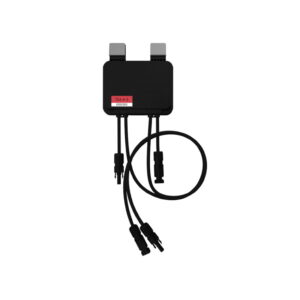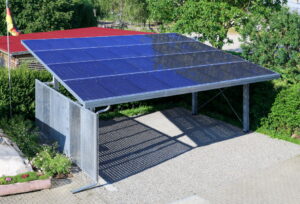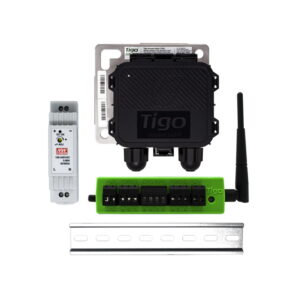 Optimisers for PV systems are small devices that are installed on the back of photovoltaic modules. Their main function is to monitor each module and maximise capacity independently of the other modules. This is important if the PV system is regularly shaded. In this article, we explore their benefits and find out when it makes sense to use optimisers.
Optimisers for PV systems are small devices that are installed on the back of photovoltaic modules. Their main function is to monitor each module and maximise capacity independently of the other modules. This is important if the PV system is regularly shaded. In this article, we explore their benefits and find out when it makes sense to use optimisers.
What do optimisers do?
The main function of photovoltaic optimisers is to ensure that the maximum power point (MPPT) is reached for each photovoltaic module. This results in more efficient operation of the system itself, even in shade and when there are external factors that may affect the capacity of the system.
The optimisers work with a DC/DC voltage transformer, which makes it possible to distinguish the operating points of the solar modules and optimise their yield thanks to a continuous output variable in terms of input power. The inverter receives information from module groups connected in series and not from a single module.
The optimisers also wirelessly transmit the production and capacity data of the corresponding module. A data collection unit is able to detect production dips and anomalies at an early stage and report them to the user responsible for maintenance. This means that installing optimisers also ensures constant and accurate monitoring of the system.
 When does an optimiser make sense?
When does an optimiser make sense?
Using an optimiser makes most sense when the solar system is exposed to different conditions, especially shading. These can be trees, chimneys or projections, for example, which result in the temporary shading of individual modules at certain times of day.
Optimisers are also suitable for systems where some modules are oriented differently from the rest, such as two or three to the east and ten to the south. This type of system connected to an inverter without multiple MPPT inputs would not function optimally. In the morning, the eastern panels produce the most energy and later the southern panels, which decreases the capacity of the others at certain times of the day. The use of an optimiser equalises the capacity of the modules and ensures a more efficient operation of the system. Since optimisers can increase electricity production by around 25% in such cases, the investment makes sense.

However, if the same conditions affect all modules, the contribution of the optimiser is too small to make a difference. Ideally, a PV system should be designed in such a way that shading is avoided as far as possible.
Summary
Optimisers can be very useful in certain cases, but you should pay close attention to the conditions. Visit our online shop and have a look at our range of capacity optimisers.
